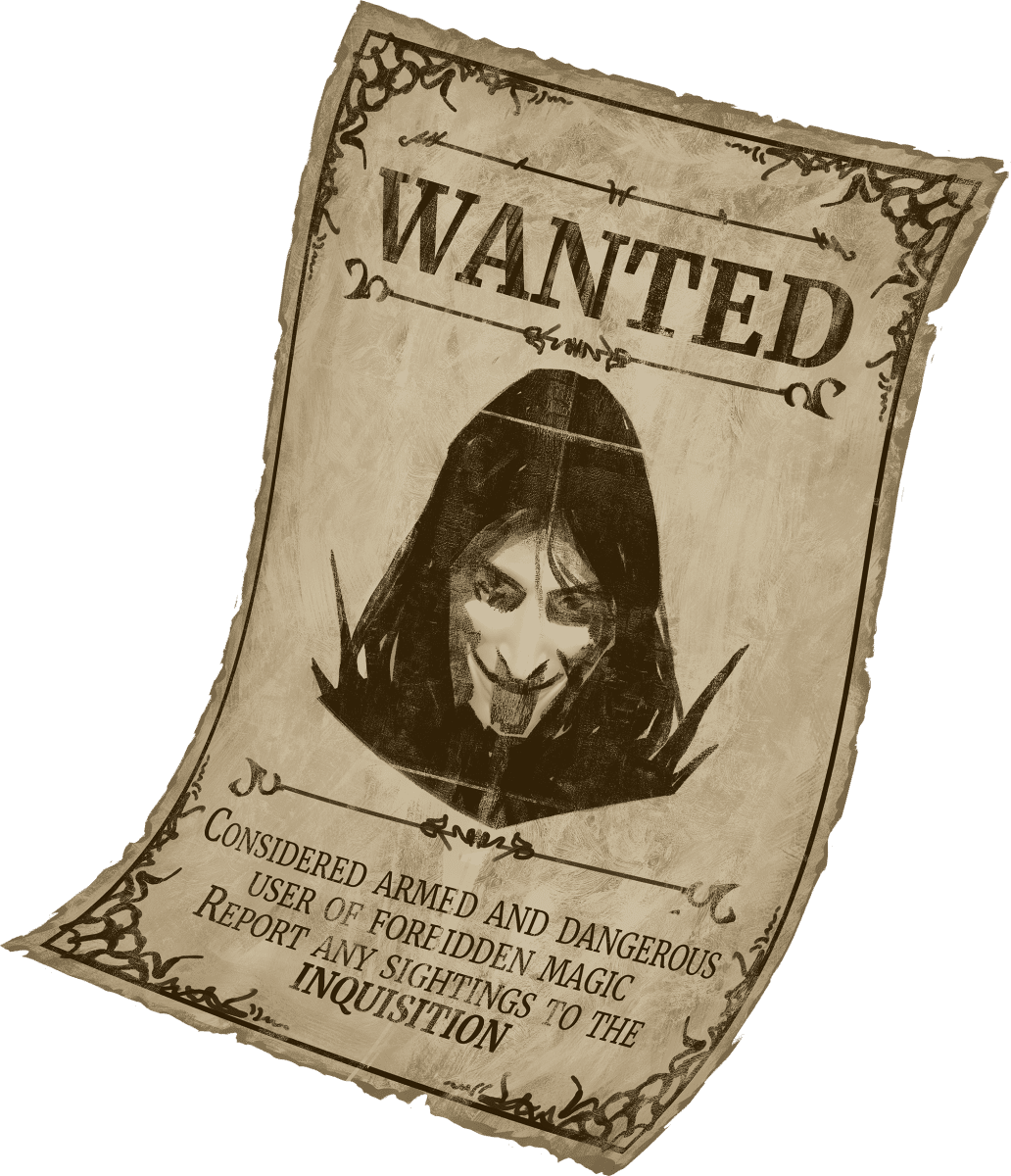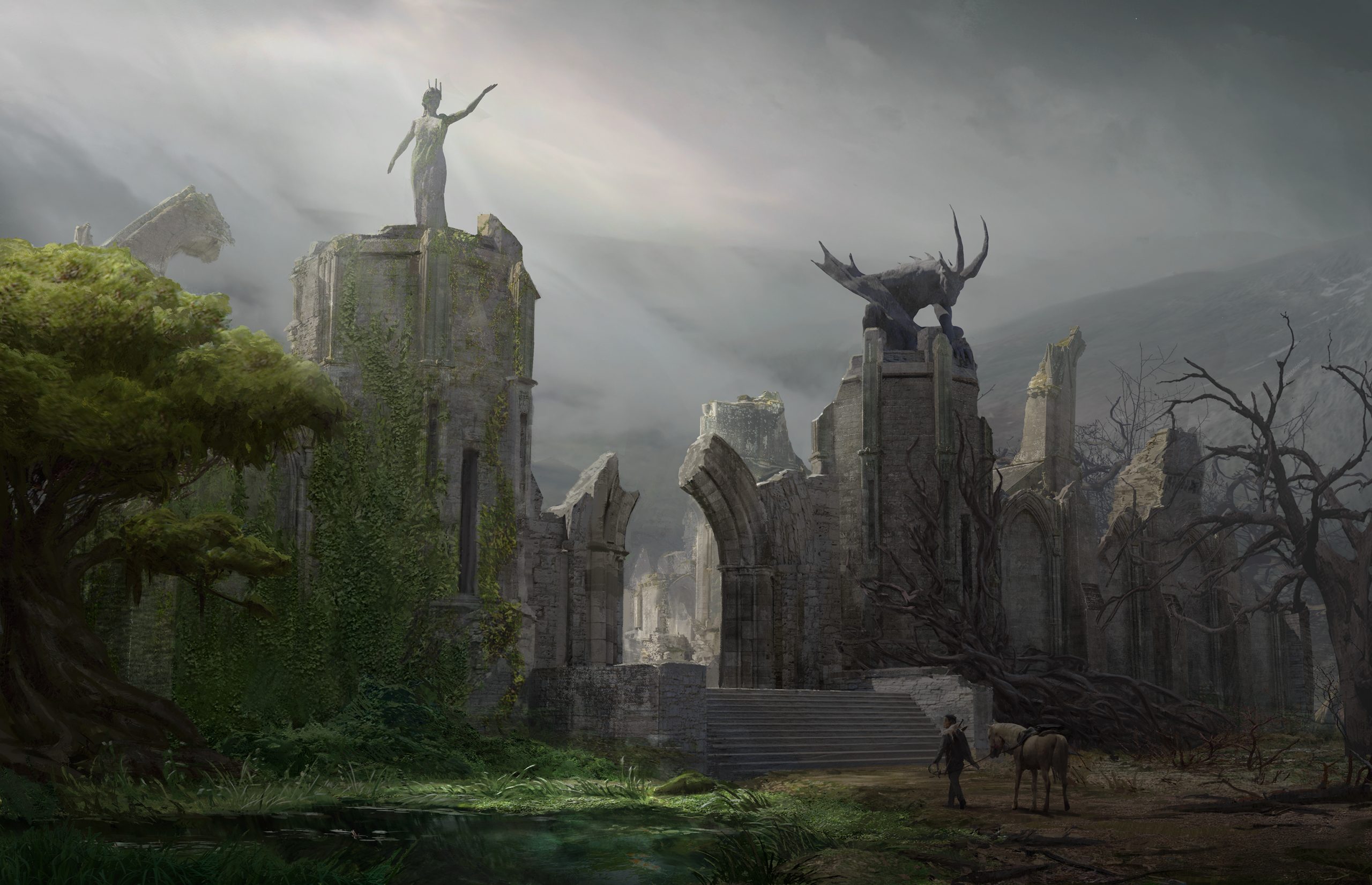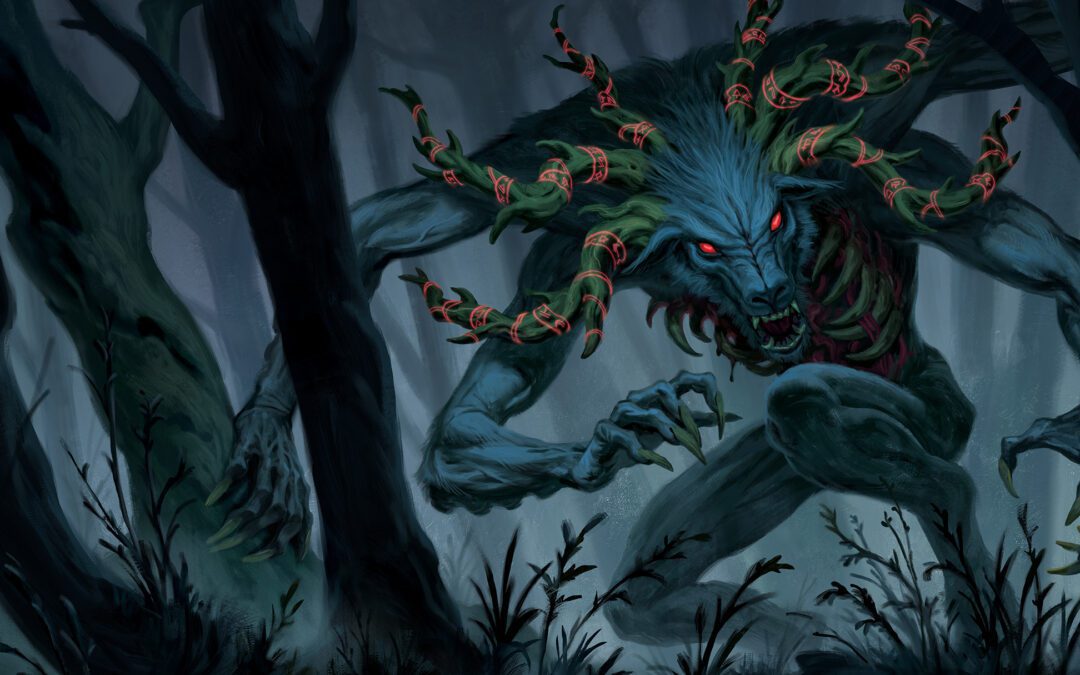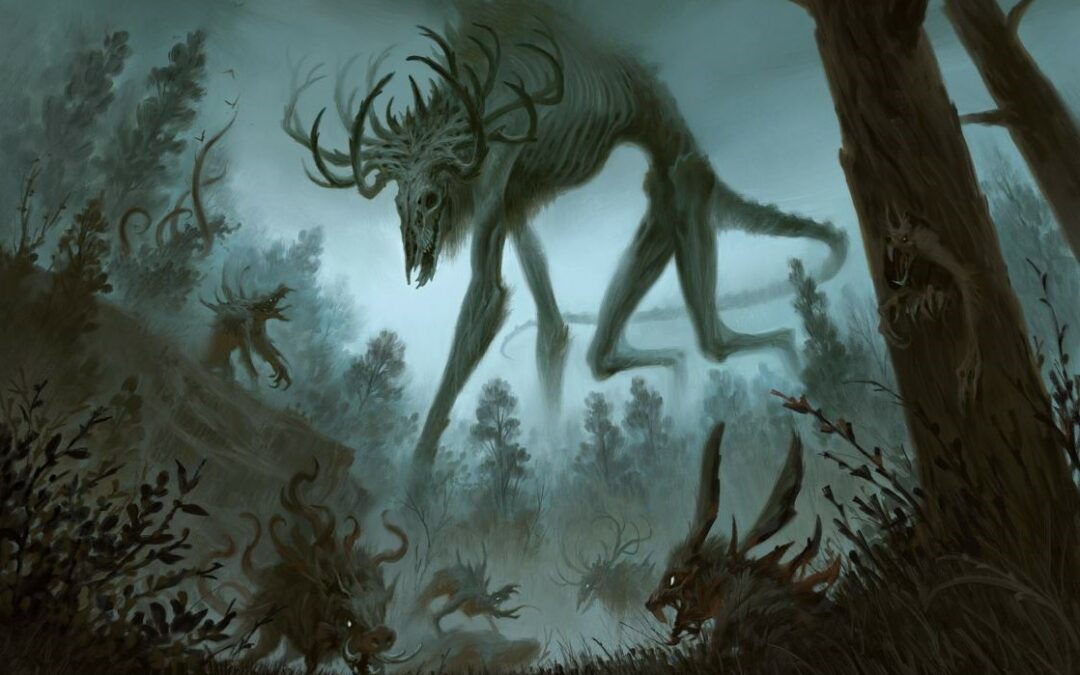 Welcome back to this gleefully maniacal blog series! Over the course of five articles, we’re chatting about the need-to-knows of building and running evil campaigns for 5th edition! So, twirl your moustache as you rally your minions, because we’re in for a wicked ride.
Welcome back to this gleefully maniacal blog series! Over the course of five articles, we’re chatting about the need-to-knows of building and running evil campaigns for 5th edition! So, twirl your moustache as you rally your minions, because we’re in for a wicked ride.
Building A World to Break
For those of you who have been in the GM seat, you are probably well aware of the age-old conundrum: what do I do when my players break my world? This ‘breaking’ can occur in small ways like murdering the NPC quest giver or in significant ways like using a wish spell to change the world fundamentally. Whatever the specific instance, it is always a fear-inducing moment where a GM is forced to quickly pull a solution out of a hat to keep the game going. In standard campaigns, these moments are usually infrequent (unless you have particularly chaotic players). Still, in evil campaigns, you are dealing with characters who are actively trying to break the world in accordance with their will. So how do we handle such characters without condemning ourselves to stressful scrambling? We build a world ready to break.

Artist: Jakubas Uogintas
A breakable world has fragile elements everywhere that are ready to be pushed to the brink. These elements can be magical, political, cultural, geographical, etc., but the important thing is to make sure they are on the verge of disaster. When building a breakable world, your goal is to have innumerable situations where even the slightest interference by the characters changes the status quo from bad to worse. Creating situations like this serves two main purposes:
- It makes your players feel like their characters have an active hand in shaping the world.
- It teaches your players that their actions have consequences (for better or for worse), so they should make choices with intention.
Playing an evil campaign almost always begins with an exploration of boundaries. After all, how often in life do we get an opportunity to make evil choices in a safe environment? Fully expect your first few evil games to involve a little bit of mayhem. Encourage and use such mayhem to reinforce the above principles, character choices influence the world, and every action has consequences. Once your players have internalized these lessons, things get a whole lot more interesting. If everyone at your table embraces these edicts, you can start constructing schemes, scale up the consequences, and present the characters with some truly interesting situations to bust open.
Crafting Consequences

Artist: Suzanne Helmigh
We’ve tossed around the phrase every action has consequences a bunch now, but what does that actually look like in the game? The word “consequences” might seem to imply only punishment, but that is absolutely not true. Players typically have the best experience at a game table when they feel like their character’s actions influence the course of events. Players want their characters to feel like protagonists. They want to be the most important people in the universe. And crafting consequences is the best way to deliver that feeling! Consequences can seem small, like earning the enmity of a sheriff in a backwoods town, or they can seem large, like killing the god of death, so all creatures become immortal. Whatever the scale of the triggering event, seeing the payoff unfold is usually a delight for all parties involved. If you are struggling to build consequences into your games, here are a few tried and true options that work wonders:
Attract Attention. Did your characters murder a beloved parent? Did they burn down a church? Did they steal a precious artifact? Whatever it was, somebody noticed. This attention might mean a faction begins to hunt the party ruthlessly, or an evil faction is interested in recruiting them. Perhaps the party becomes barred from entering all nearby towns or starts attracting a cult following.
Cultural Shift. Did your characters stage a series of murders to look like lycanthrope attacks? Did they raid cemeteries en masse to create an undead army? Have they used dark magic to control and puppet government officials? Whatever the specifics, the character’s actions have caused a cultural awareness to develop that will make the same old tricks hard to perform. Perhaps an entire country starts burning the dead to stop corpse animation, or special guardians now detect magic on every person who steps into the capital building. The world wises up in response to your party’s tricks.
Magical Affliction. Did your characters slaughter the world’s last unicorn? Did they refuse to pay tribute to an elder god? Did they intrude on a fiend’s turf? Whatever they did, they are inflicted personally with a magical ailment, or the lands/people around them become targeted by an ongoing magic catastrophe.
Natural Disaster. Did your characters raze a village? Did they free an evil elemental lord? Did they destroy a druid circle maintaining the natural balance of the world? Whatever they did, it was the final straw that broke the status quo and kicked off a full-blown natural disaster. Major tectonic events, volcanic eruptions, floods, and storms are challenges for all characters (evil or not) to contend with.
Power Vacuum. Did your characters assassinate a king? Did they frame a high priest? Leave a string of ransacked villagers ripe for domination by a warlord? Whatever the specific instance, the party has created a power vacuum, and someone (ideally worse than the previous owner) has appeared to seize an opportunity.
Resource Scarcity. Have your characters driven all hard-working folk out of their hometown? Did they raid so many ships that merchant vessels no longer visit local ports? Did they massacre all members of the nearby temple, so there is no longer magical healing available? Whatever schemes your evil characters have been pursuing has caused helpful resources to dry up.
Curses As Consequence
Grim Hollow: The Campaign Guide is jam-packed with fantastic consequences to unleash, but one that really shines is the “Curses.” Be sure to check out the expanded rules and options for curses in the “Character Options” chapter of the guide. As written in the basic rules, curses are very lackluster, so use these expanded options if you want them to be effective and really feel like a penalty!
Rules for Running A Breakable World

Artist: Sam Keiser
Building a campaign setting ready to be broken requires a few fundamental things. While most of these GM tenants are good to cultivate for all games, successful evil campaigns require stringent commitment:
Be Ready to Kill Your Darlings
In evil campaigns, no NPC is safe. An evil party doesn’t play by standard rules. That innkeeper they got along with so well last game may very well wind up with their throat cut in an alley next game. A character might slaughter a beloved family member in a fit of passion. Who knows? Keep this firmly in your mind, maintain emotional distance from your NPCs.
Always Have A Backup Plan (Or Five)
When planning game sessions, a GM typically plots out a course of how they expect the game to go. Most of the time, we can keep that plot in mind and plan for encounters to fit those events. For evil games, in particular, it is important to look at those outlines, identify critical decision moments, then think about what happens if the party takes a startling choice. Of course, it seems like the party would want to hand off the MacGuffin to get a horde’s worth of gold, but what happens if they don’t? It seems like the party wouldn’t want to instantly murder the riddle-master who possesses the only way into the tomb, but what if they do?
Get Personal
Tailoring sessions and campaign arcs to your PC’s backstories will be your single greatest tool when running an evil campaign. Traditional morals don’t apply to evil characters, so you have to get personal if you want to motivate them. The threat of allowing a rampaging monster to obliterate a town might not matter to an evil character. But, if that town is where your assassin’s poison supplier lives, it suddenly matters a great deal. Learn the backstories of your party well (you have a huge advantage here if you built it with them during session 0), and you will have a variety of tools to craft compelling hooks to keep a game on track.
Play Foes Intelligently
Evil PCs are smarter than your average PC. Evil characters are constantly forced to scheme, wheel, and deal to achieve their purposes, which breeds a ruthless play experience. Trust me when I say that 5th Edition monsters are wildly underpowered, and clever characters typically experience zero-to-little challenge defeating even the most ‘fearsome’ of foes. So to overcome this issue and challenge our evil characters, we have to play smart. We’ll be talking much more about how to create creature-based challenges next article, but for now, don’t hesitate to have your monsters scheme just as thoroughly as your PCs.
Set Parameters
A lot can go sideways very quickly in evil campaigns, so it is really important that you set very clear expectations with your players about things that cannot be broken. If you don’t set these expectations before you start playing, feelings will get hurt. Ideally, you’ve already discussed these ‘no go’ zones during your Session 0, but it bears repeating here. For example, if one of your characters has a kid sister they love more than anything in the world, you better make sure everyone at the table agrees never to harm her. This goes for you too, GM. Killing off family members, best friends, and beloved pets for the sake of drama is cheap and easy. Don’t do it unless you have express permission. Be the clever kind of evil you want to see in your evil world.

Artist: Brent Hollowell
Subvert Expectations
Once your evil party starts breaking the world, they are bound to start feeling unstoppable. That is to be expected. It is the nature of power, after all. The more we get away with things, the more invincible and arrogant we become. This is all well and good, but you must regularly subvert expectations to keep a long-term game running. There are many ways you can do this but orchestrating the unexpected requires that you listen very carefully to what your players think of the world, and you play right into their character’s hubris. If they are convinced an NPC is a harmless fool, give them a secret agenda. If they murder commoners without a thought, introduce commoners who look the same town after town. If they think slaughtering town after town is a breeze, imply that it is feeling suspiciously easy. If they achieve an extraordinary feat, perhaps someone else starts taking the credit. Remain vigilant for opportunities to introduce narrative twists.
Building a world to break is a challenging but deeply rewarding GM experience. Navigating the lines between telling compelling stories and allowing players full latitude to be evil is an invaluable skill to cultivate. Whenever you feel lost or uncertain about the process, just take a pause and ask yourself, if you were an evil villain, what would you destroy first? The ideas that come to mind are probably exactly where you should start.

![Grim Hollow: The Player's Guide [PDF]](https://b2358178.smushcdn.com/2358178/wp-content/uploads/2021/02/Grim-Hollow-players-Guide-PDF-600x600.jpg?lossy=1&strip=1&webp=1)


0 Comments